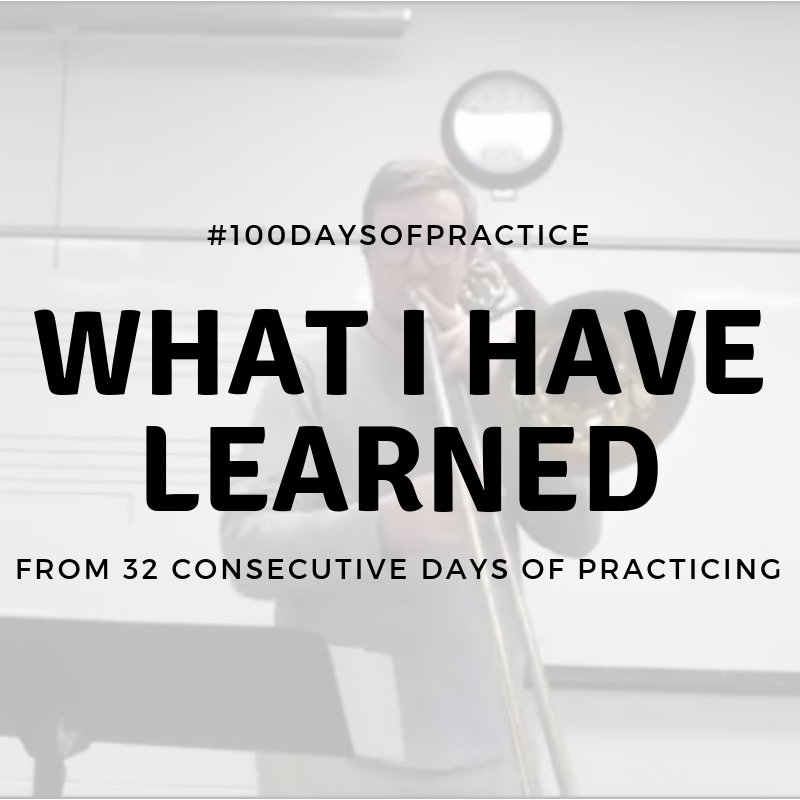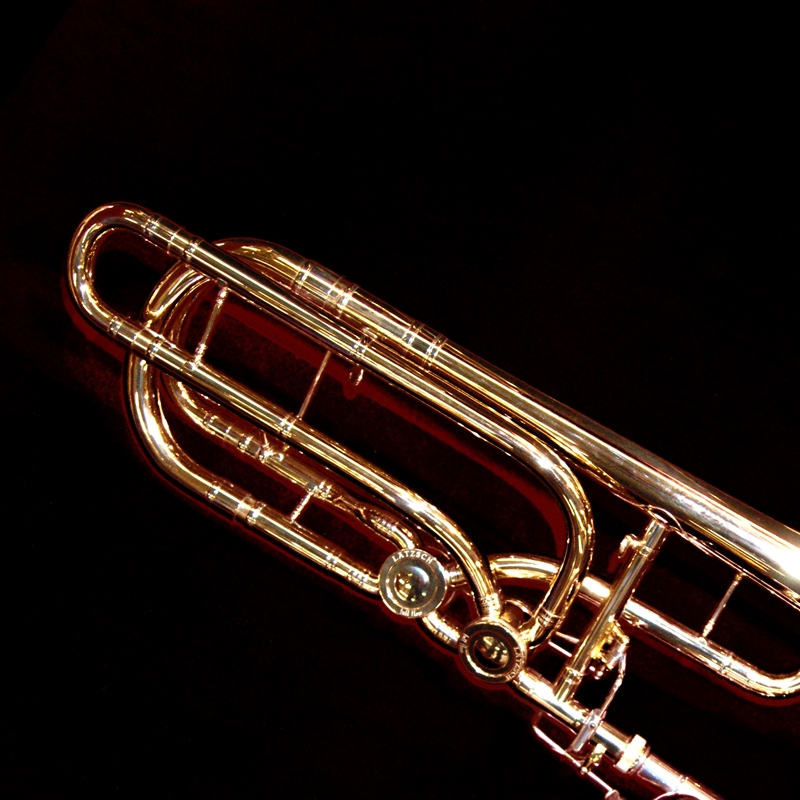What I Have Learned From 32 Consecutive Days Of Practice
If you follow Last Row Music’s social media presence, you will notice that for the past month, I have taken on the challenge of 100 Days of Practice. Created by Hilary Hahn, 100 Days of Practice has become a large success among many musicians.
Simply put, #100DaysOfPractice challenges you to video record yourself practicing for 100 consecutive days. For Hilary Hahn, this meant posting a 60-second clip of her working through a piece of music with raw video footage. When asked about this, the violin extraordinaire said she would spend a large amount of time listening back to what she recorded so she could carefully select a productive portion of her practice session for the post to Instagram.
Since this has many benefits to personal progress for any musician, I have taken on this challenge. Starting on November 26th, I began the journey of practicing for 100 consecutive days – something I probably have not done in a very long time, if ever. Partially the reason for starting when I did was to build up stamina and consistency leading into my five recitals planned for January and February. My rules were also simple:
1. Record something during a practice session.
2. Listen back.
3. Find a clip to post to social media.
4. Swallow your pride and press ‘Share.’
To do this for 100 days can be harder than you think. Here’s what I have learned to tackle such a challenge that could influence you in taking on the challenge.
1. Know the date for Day 100.
When I started this challenge it was the Monday after Thanksgiving. With gigs and school concerts, I knew life would be busy throughout the month of December. Looking ahead, I knew 100 days from November 26th would be Tuesday, March 5th, 2019 – which means I would have to practice on Christmas Day and New Years Day. One one hand, I had to find time to practice during those major holidays. On the other more positive hand, I would be allotted two weeks of no school to practice more than I typically would be allowed during a school year.
Being that 2019 is about to begin next week, some may ask why I didn’t wait until January 1st. Having read books on productivity, habits, and routines, I have learned the best time to start something is yesterday. Habits can only really be achieved by the small day-to-day tasks we ask of ourselves. Building up the hype and waiting to create goals for the new year doesn’t really instill the idea of a daily habit. I wanted to get better practicing NOW not tomorrow or January 1st.
When it comes to starting a habit, asking ‘why’ should lead you to the answer for ‘when.’
2. Know what you will record the first 5-7 days.
Many times taking on a challenge of any nature, people may just jump in without a plan. Then after a few days, the person loses interest in the extra step of recording which can then lead to “Oh I forgot to record today.” For me, recording myself each day is the most crucial part of this challenge. It keeps me accountable. So for the first few days, I started with what I start any first practice session. In a sense, I walked the viewer through my warm-up routine.
Day One – Long Tones
Day Two – Lip Slurs
Day Three – More Lip Slurs
Day Four – Scales, Arpeggios, Thirds
Day Five – Bordogni Etude
Day Six – Technical Etude
By knowing exactly what you will record (again, planning ahead), you are able to save time setting up your device for recording and can pinpoint a certain part of your session to record, listen back, then repeat. Before I put the instrument to my face, I already know what will be recorded for the practice session.
3. You do not need to be fancy with recording.
Hilary Hahn just records from her phone. It’s that easy, people. However, for us brass players we can run into the volume levels becoming a nuisance. For a long time, I recorded using my Zoom iQ5 microphone plugged into either an iPhone or iPad. But then I wanted to record better and wanted to invest in the challenge. So I decided to purchase a Logitech C920 HD Webcam and started using my Blue Snowball microphone. By recording on my MacBook, two things happened: 1) I became more focused during the recording and practice sessions because I know the quality would be good. 2) It allowed me to share and save the file a whole lot easier. If you notice the recording quality is a lot different from Day 1 to Day 32, because I spent a little more time on how I sound (and how I look). Seriously – invest in decent recording equipment.
Click here to read Chris Clark’s guest post on the economics of audio recording.
4. Minimal practice time causes for focused practiced time.
I’ll be honest. I can’t practice a lot during the weekday (yes, “can’t” is the correct word choice). With teaching in a local school district every day plus having 18-20 weekly private students – oh, and wanting to spend time with my wife and 6-month old son – I am not able to practice 3 sessions a day like others. Even though I play every day multiple times, PRACTICING is minimal. Therefore, the planning factor of all this has become crucial so time is not wasted. Before I practice, I know what I will practice. Thanks to being a Premium member of the Modacity app, I am able to log practice time for each session as well as know what has been recently practiced. At first, I was logging into Evernote and keeping a journal of what was practiced. As you can imagine, I would forget to record the practice time, so I went to Modacity and began using their excellent features of keeping a practice log.
5. Trust the process.
Taken from the playbook of some of the greatest coaches and athletes, trusting the process can get you much farther regardless of the outcome. When I record I am not striving for a perfect take each time. If you have followed along the daily videos, you will notice intonation problems, incorrect counting, cracked notes, etc. For me, this challenge is to make me a better, consistent musician, and I knew that if I have tried to get the ‘perfect take’ on Day 1, it would have taken me forever to record, edit and share, and I probably would have given up. BUT, by being consciously aware that I have a small window of time for daily practice has pushed to get my best take on the first or second try. It’s causing me to be more focused and detail-oriented. On some days, I will just record a cold take of a Bordogni etude and submit that take. Other days, I will listen back and say, “No, this can be better.”
This certainly causes an elevated feeling of vulnerability – “Is it good enough?”, “What will so-and-so think of this?” or “I wonder how many ‘likes’ this one will get.” For me, impressing others is not the goal (there are a lot of better Insta-brass players than me). Getting better is the goal. Striving for consistency and raising the bar each new day is what trusting the process looks like after 100 days. As of Day 32, I am not where I want to be, and there could be a chance at Day 100 I still am not there. But I can say, I am closer to where I want to be on Day 32 than I was on Day 1.



